There was a time, long ago, when fashion shows were a private matter. Gone are the days when Coco Chanel sat at the top of the staircase of her Rue Cambon salon, peering down while a very small group of fashion professionals; buyers, editors and writers furiously sketched and took notes and made serious decisions as to what would fly and what would define at that moment in time the word chic. The take away was a perfect presentation, with no distractions, no peripheral information to distract from the task at hand, that of expressing the couturier's vision in cut and draped fabric wrapped around living mannequins and finished off with flawless hair, makeup and accessories like icing on a cake.
So, of course, we have watched the de-evolution of this process over the past several decades... beginning with ready-to-wear, the celebrity-in-the-front-row phenomenon, and now with the advent of handheld mobile technology, a complete breakdown of the houses having any control whatsoever of the "public image" which is seen instantaneously from third row hands straight onto social media. Now, mix this with, as Cathy Horyn pointed out, the fact that there are too many presentations and not enough talent, topped off with Suze Menkes' lament of the new sideshow, the "circus" that now takes place physically right outside of the venue where the show is about to take place. This new stop, pose and tweet phenomena is now as much if not more fodder for this constant need to "report" on something. The bloggers, having come at the industry straight on but painfully unnoticed for so long, (until Miss Gevinson wore that hat) have made up their own purpose for getting out of bed in the morning, as they have decided that their own creativity is as authentic as the designers whose shows they live to attend.
One might even make the argument that it is they who should really be funding these events, rather than the houses, as they benefit from the backdrop increasingly more so than the organization that shelled out to appear on a white commercial catwalk for their own 15 minutes tops.
Can we ever go back? No, never. Ask elder statesman Tom Ford, who attempted to show to just a "select group of editors" and his super-famous best friends, not release any images until several months later and try to hold on to that private club from a galaxy far far away. How did that work out for him? It was a bit of a yawn in terms of process and seems he is returning to the runway during London Fashion Week along with everyone else.
You cant ignore the reality that even at a brilliant theatrical show presentation like that of Thom Browne, you notice that no one is looking up at the models in their painstakingly put together outfits. Nope, instead, they are staring at the screens on their phones.
It's 2013. Like it or not, everyone is a photographer, everyone is a videographer... and I've seen the tweets to prove it. And Instargam filters or not, the images aren't very good. Yes, they allow you to say, "I've seen it!" but what exactly is it? So, when the show invitees are staring at their own screens and there is a sub-show happening before and after your show, what's a designer to do? The experience they work so hard to provide in order to forward their creative vision has been completely twisted into a self-serving exercise for those in attendance.
Have they completely lost control?
Why yes they have! Is there anything they can do about it? Why yes there is! Take the case of Peter Som, who relinquished his show time slot and opted instead to do a purely digital presentation, painstakingly filmed in advance, with fewer models, the walk perfected, the designer himself sitting up front overseeing exactly how, visually, every look was to be consumed. They released the finished presentation on digitalfashionshows.com this morning and the purpose was clearly defined. It's not an event that benefits the hangers on, but rather, he has taken back, for all designers, the possibility of having complete control of the presentation for himself. The public will be served a very well thought out image of the creative work, rather than poorly composed snapchats and dead looking quick digital images taken in haste by amateurs and spread all over the world in an instant. It feels like sucha waste.
I must admit that I am biased towards this, being a photographer and a filmmaker, the idea of composing a designers symphony from all the right angles, the textures, the movement, the sparkle in the models eye. Let it be embedded, reblogged, excerpted, grab some stills, make it public all right, but limited to the visual image the house controls. Not after the fact, like campaigns function now, but in real time. One day designers will realize the campaign is already happening the moment the lights dim and the music begins, not six months later when the new magazines come out. They must, as Mademoiselle Chanel did from her staircase perch, have a public image, limited.